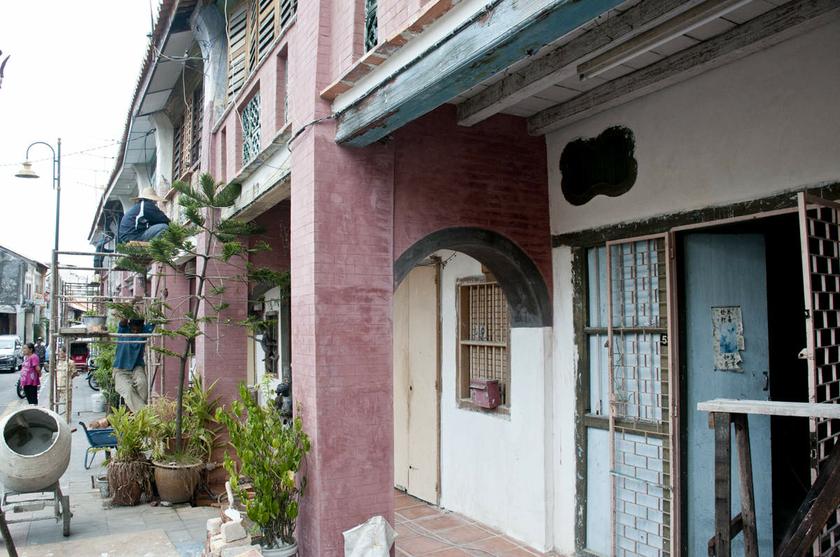GEORGE TOWN, Aug 3 — More than five years ago, George Town — with its ramshackle pre-war townhouses and a general air of neglect hanging over the inner city — was in the grip of urban decay. Most nights, the place was like a ghost town.
George Town was like an unpolished gemstone but no one would even cast a glance at it while pre-war shophouse owners let their century-old buildings — those that were vacant and unwanted — rot and fall into disrepair.
When George Town was inscribed as a Unesco World Heritage site together with Malacca back in 2008, everyone sat up and took notice but restoration and rejuvenation did not happen overnight.
Many stakeholders, even the newly-elected Pakatan Rakyat state government, do not have prior experience in heritage conservation and urban renewal.
So, for a brief moment, everything in the gently decaying inner city remained almost at a standstill as everyone scrambled to find out how they could turn it into a shiny, new gemstone.
The federal government promised allocations to both heritage cities of George Town and Malacca but for George Town, the funds were not channelled directly to the state but instead, it was channelled directly to the community in ways that transcend ringgit and sen.
The RM20 million allocation was fully utilised by the federal government’s own special purpose vehicle, Think City, to bring about changes to George Town and it effectively stopped the urban decay to bring new life to the city.
Think City was established in 2009, under Khazanah Nasional Berhad, to start the ball rolling in urban regeneration, restoration and turning George Town into a gem.
It took charge of a prototype urban regeneration grant programme — George Town Grants Programme (GTGP) — and under this programme, building owners were encouraged to restore their decaying buildings with seed money from GTGP.
RM20 million may not seem much especially when there are hundreds of heritage buildings to restore, hundreds of living heritage to preserve and countless other things such as keeping the remaining community and culture alive, keeping the economy going and most importantly, sustainable and ensuring the city is not merely an empty husk of newly restored heritage buildings.
Think City may be a new set-up comprising professionals, some experienced and some not, but in the years it ran the GTGP — from 2010 to 2013 — it managed to stretch the allocation and create a huge impact.
George Town today is a far cry from what it was more than five years ago and Think City has mainly achieved what it set out to do.
In the last three years, a total 206 projects were approved under the GTGP with a disbursement of RM16.4 million.
These were not merely physical building conservation projects but projects included enhancing public spaces, cultural mapping to get a holistic view of the city and an important component to keep it all going, getting the communities to be the drivers of urban regeneration.
According to Think City’s recently released report on the projects it had undertaken, out of the 206 projects, only 113 were physical restoration projects amounting to RM7.7 million.
The funds ran out in December 2013 but the impact of the programme is worth much more than that as Think City started the ball rolling and the communities, policy makers and stakeholders have taken charge to keep the urban regeneration momentum going.
The GTGP spurred stakeholders to invest in the city regeneration because for every RM1 GTGP disbursed, private stakeholders put in an additional RM6 — in short, stakeholders had forked out RM98.4 million in the last three years as compared to GTGP’s RM16.4 million.
Now that the GTGP has ended — with no immediate plans to extend it — Think City’s success in urban renewal for a world heritage site will not go unnoticed.
Think City’s knowledge partner Fundacion Metropoli’s Founder and President Alfonso Vergara described Think City’s efforts in transforming George Town as ”spectacular.”
Though a lot more needs to be done for George Town, there are now bigger plans and national projects in the pipeline for Think City.
It is learnt that the next place to see urban regeneration under Think City’s skilful hands is Butterworth — the mainland side of Penang.
There are many other cities in the country that are in need of urgent transformation to give them sustainability and new breath of life and it seems these are the future plans Khazanah has for Think City.
Khazanah’s deputy chairman Tan Sri Nor Mohamed Yakcop announced recently that Think City will extend its urban renewal activities to the Klang Valley, Iskandar Malaysia and Sabah and Sarawak as well.
According to Think City Executive Director Hamdan Abdul Majeed, the three years of implementing a broad range of urban regeneration projects have allowed it to fine-tune its mechanism and these can be syndicated successfully in other cities.
“Think City is not about running a grants programme but about providing innovative thinking for urban transformation and a system that allows for flexibility in its approach rather than a ‘one-size fits all’ dynamic which is not realistic,” he said.



















